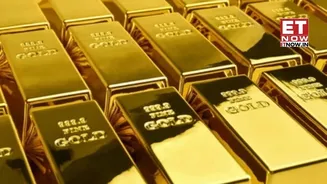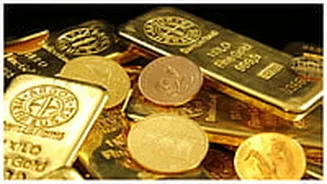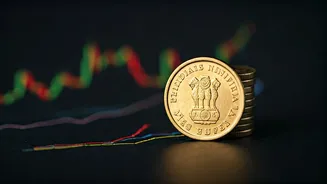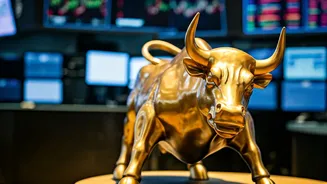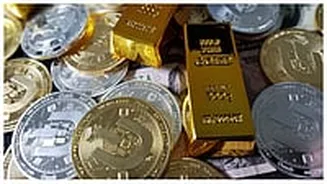Gold Price Overview
Gold prices are a dynamic indicator shaped by a complex interplay of global economic conditions, market sentiment, and geopolitical events. The metal is
often viewed as a safe-haven asset, which means its demand tends to go up during times of economic uncertainty, like recessions or inflation spikes. Conversely, when the economy is stable and strong, other investments might appear more attractive, potentially leading to a decrease in gold prices. Currency fluctuations also significantly affect gold prices. Since gold is globally traded in U.S. dollars, the dollar's value has a direct impact; a weaker dollar typically boosts gold prices, while a stronger dollar can make gold more expensive for buyers using other currencies. Investors worldwide, including those in India, closely watch these trends to make informed decisions about their investments and navigate the volatile market dynamics.
Factors Influencing Gold
Several factors contribute to the price movements of gold. Economic indicators like inflation rates, interest rates set by central banks, and the overall economic growth play a crucial role. A rising inflation rate often fuels the demand for gold as a hedge against the diminishing purchasing power of fiat currencies. In addition, the decisions of major central banks, particularly the U.S. Federal Reserve, to increase or decrease interest rates significantly impact gold prices. Geopolitical events, such as international conflicts, political instability, and trade tensions, can also cause gold prices to fluctuate. During times of heightened global uncertainty, investors tend to move towards gold, increasing its demand and subsequently its price. Furthermore, the supply side, including factors like gold mining output and central bank gold reserves, also affects the balance and the market prices.
Gold Market Today
Today's gold market is shaped by a confluence of these elements. Analyzing the most recent market data is essential to identify immediate trends. The current prices must be compared to yesterday's closing prices, previous week's performance, and even longer-term trends to grasp the direction the market is taking. Investors and traders should monitor the latest news releases, economic reports, and announcements from major financial institutions. Also, it's very important to note any shifts in market sentiment by paying attention to investment patterns, changes in trading volumes, and expert analyses, which can provide insights into what other investors are thinking. The interplay of these variables creates a dynamic environment where gold prices can change quickly.
Investment Strategies
Considering the fluctuations in the gold market, there are diverse investment strategies that one can use. For long-term investors, gold can be a portfolio diversifier, helping to mitigate risk by performing differently from other assets like stocks and bonds. Short-term traders might capitalize on daily market movements using techniques such as technical analysis and futures contracts. Investors can opt to buy physical gold in the form of coins, bars, or jewelry, offering tangible ownership of the asset. They can also buy gold-backed Exchange-Traded Funds (ETFs), which provide exposure to gold without directly owning the metal. Furthermore, investing in gold mining stocks can be another approach, which allows investors to profit from the mining operations and potential rise in gold prices. Understanding and balancing these strategies allows investors to align their actions with their financial goals and risk tolerance.
Future Outlook
Predicting the future of gold prices involves a look at several global economic and political forecasts. The trajectory of inflation is a key indicator, with experts expecting gold prices to be impacted by both its rise and fall. Monetary policies of central banks will continue to be closely watched, as changes in interest rates could impact the demand for gold. Geopolitical conditions remain unpredictable, so conflicts and international tensions may push investors towards safe-haven assets. Furthermore, technological developments in the mining industry and changes in consumer behavior will impact gold's supply and demand. Analyzing these factors comprehensively provides a better understanding of the possible future scenarios for gold prices. Staying informed about the latest market research, analysis from financial experts, and industry insights allows investors to stay ahead in this dynamic market.



